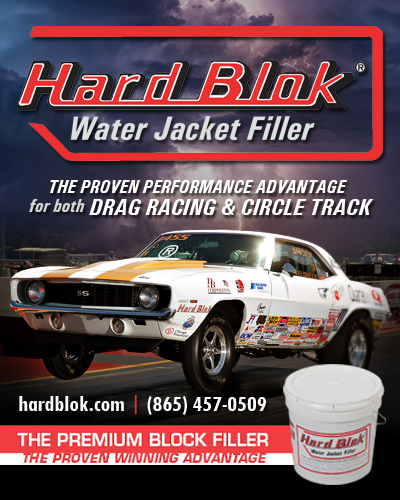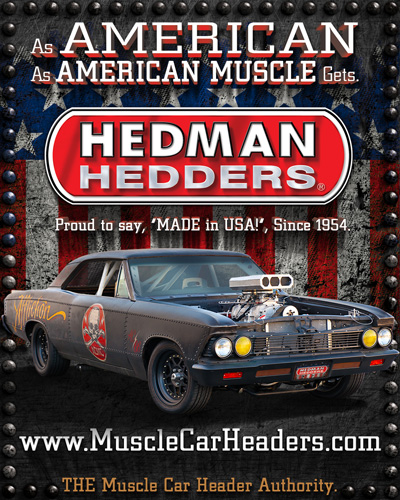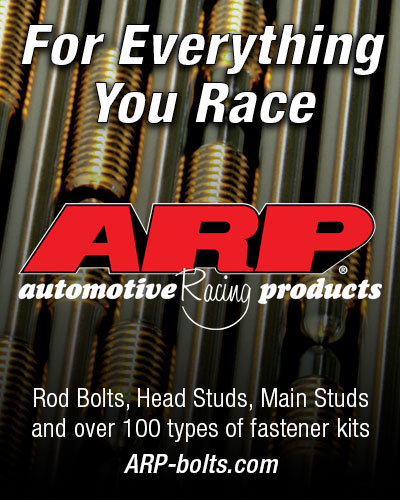THE TOD MACK MEMOIRS: THE WILD BUNCH — HOW IT HAPPENED…
 Tod Mack, a former owner of Maryland international Dragway, had his fingerprint on many promotions and innovations from the heralded facility located in Budds Creek, Md.
Tod Mack, a former owner of Maryland international Dragway, had his fingerprint on many promotions and innovations from the heralded facility located in Budds Creek, Md.
Mack, whose promotional home runs included the US Pro Stock Open, Mountain Motor Nationals, and The Wild Bunch, solidified his name in the ranks of significant drag racing contributors.
Mack was the first to use a pairings ladder based on qualifying times for the nitro cars when he ran the NASCAR Drag Race Division in the 1960s. Tod and Larry, along with Lex Dudas and Mike Lewis, created the ET Bracket Finals program in the early 1970s, which the group finally turned over to NHRA after a few years. MIR was the winner of the Inaugural event held at York US 30 Dragway. All in all, Tod Mack owned or operated six tracks over his career, and MIR fans benefited from his decades of experience.
In addition to the more successful promotions, Mack and longtime partner Larry Clayton introduced the world to the first four-wide fuel Funny Car match (almost four decades before Bruton Smith did the same thing in Charlotte). Then there was the wacky “Dragzacta,” which allowed fans to take part in pari-mutuel betting on weekly bracket races as they would at a horse track.
Mack was involved in a lot of drag racing.
***

 While thinking back at some of my accomplishments while in the drag racing industry, one of my favorites immediately comes to mind — the creation of The Wild Bunch. For several reasons: It had a significant impact on the sport; It was fun; I made many lifelong friends; It was profitable for us, the members of The Wild Bunch and the race tracks that hosted the events; and it was the right promotion at the right time during the growth of the sport. For those who don’t already know, The Wild Bunch was a rag-tag group of car owners who liked to go fast, thought out of the box, and stuffed big, loud, supercharged motors in very unlikely cars at the time. The forerunner to today’s very popular Pro Modified class
While thinking back at some of my accomplishments while in the drag racing industry, one of my favorites immediately comes to mind — the creation of The Wild Bunch. For several reasons: It had a significant impact on the sport; It was fun; I made many lifelong friends; It was profitable for us, the members of The Wild Bunch and the race tracks that hosted the events; and it was the right promotion at the right time during the growth of the sport. For those who don’t already know, The Wild Bunch was a rag-tag group of car owners who liked to go fast, thought out of the box, and stuffed big, loud, supercharged motors in very unlikely cars at the time. The forerunner to today’s very popular Pro Modified class
As a lifelong participant and promoter of drag racing events, I made it my business to pay attention to what was happening on the track that caught the interest of the fans. I realized very early on that the louder, more powerful, and violent a car was, the more interest it created. To the surprise or disbelief of many, it was not just the speed or ET on the scoreboard.
That is probably why I hired in so many nitro funny car shows in the early days. They were loud, violent and attracted attention and crowds. Also, there were plenty of them, and they were easy to get.
The downside of hiring the nitro cars was that the cost of putting on those shows was very high, and I often ended up working for them instead of them working for me. While they put people in the stands, they also quite regularly offended my regular weekly competitors who had to put up with delays, oiled tracks, and a sense that they were not appreciated.
Fast forward now to a warm night sometime in the late 1970s when I had one of our big shows at Maryland International Raceway. It included a match race between Roger Gustin’s popular jet funny car and some dud that failed to show up. The stands were packed, and I had promised a show. I had to deliver. What do I do with just one jet funny car in the pits? I had to find a suitable replacement to give the fans their money’s worth. We built our reputation on that, and maintaining that reputation was always key to a successful future.
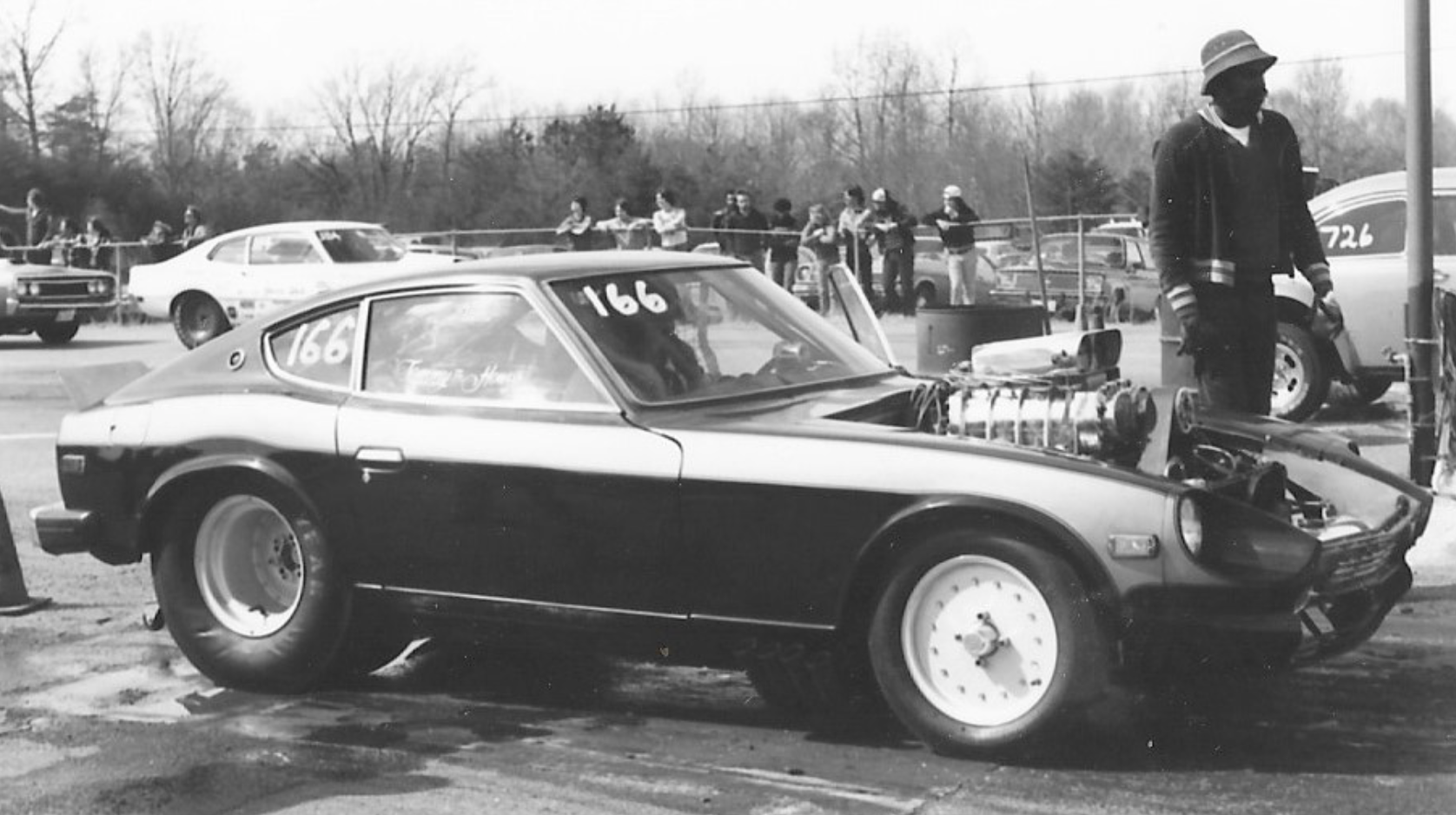 There was no one there that could keep up with Gustin’s jet car, so I had to look for someone who would excite the fans in some other way. We had cultivated a great field of fast and good-looking Super Pro class of race cars at MIR. But compared to the jets, they were just, well, nice race cars. One of them, though, stood out at the time and brought fans to their feet every time he ran. The car was owned by a great guy named Tommy Howes, who had stuffed a big supercharged motor into a full-bodied Camaro just to have fun with it; supercharged cars, other than the pro dragsters and funny cars, were a rarity then. But they made lots of noise and smoke, and the fans loved it.
There was no one there that could keep up with Gustin’s jet car, so I had to look for someone who would excite the fans in some other way. We had cultivated a great field of fast and good-looking Super Pro class of race cars at MIR. But compared to the jets, they were just, well, nice race cars. One of them, though, stood out at the time and brought fans to their feet every time he ran. The car was owned by a great guy named Tommy Howes, who had stuffed a big supercharged motor into a full-bodied Camaro just to have fun with it; supercharged cars, other than the pro dragsters and funny cars, were a rarity then. But they made lots of noise and smoke, and the fans loved it.
I went to Tommy and explained to him my plight, asking if he would race against the jet car — with a head start, of course. He thought about it and said he would then have to miss the chance to win the purse for the Super Pro class that night. I immediately told him that I would pay him whatever the winner’s purse was that night if he would accept the deal. In actuality, I knew he would jump at the chance to be a star in front of the big crowd that night, but I felt he should be compensated for it. We made the deal, and I felt very relieved. The match between the two cars was very well received by the fans, Tommy was happy, and I was happy.
Following the event, it occurred to me that what Tommy built and brought to the races was marketable. If I could find a few other screwballs who had the same loud supercharged motors, I felt I could find a way to put a show together. Sure enough, there were a few more guys around with similar cars and nowhere to race them. I contacted them to see if they were interested, and off we went.
The original group of guys I found included some interesting characters who had one thing in common. They loved racing, and they loved being different even more. All had supercharged motors. Some of the initial members of The Wild Bunch included:
Tommy “The Who” Howes in his aforementioned Camaro that was soon after replaced by an even wilder Datsun 280Z
Elmer “Dr. Wacko” Wachter built a CJ5 Jeep with a blown Chevy in it. The wheelbase was not much longer than the motor/transmission combination, and its high center of gravity made it one of the most exciting things to watch run that I had ever seen. He certainly deserved his nickname.
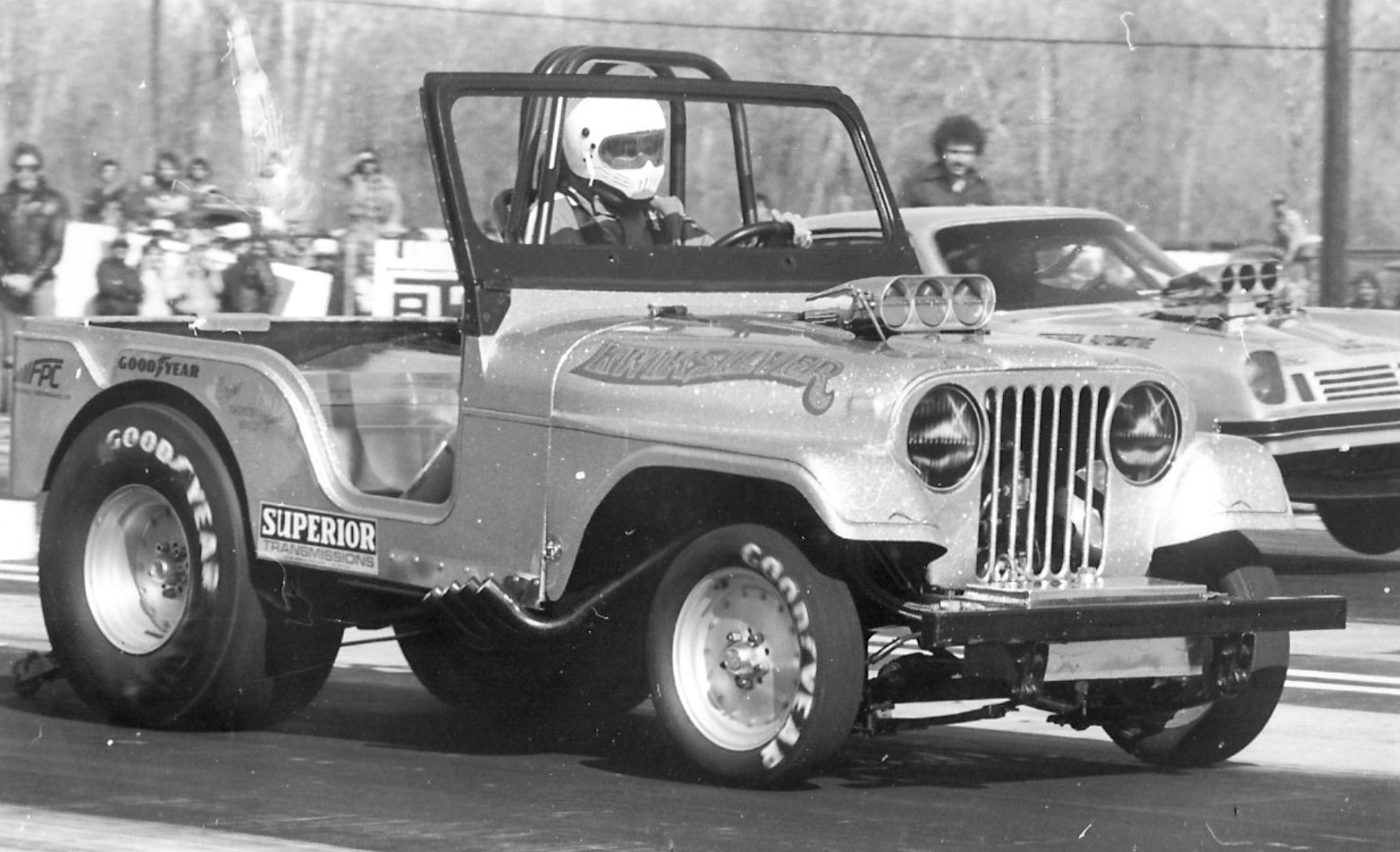 Jeff Weddle, who initially raced a Vega and switched to a later model Camaro
Jeff Weddle, who initially raced a Vega and switched to a later model Camaro
Denny Brightwell in another clean Camaro
John Paris, who was driving an old Mustang tube chassis car I gave him.
A short time later, Jack Weller joined the group in a Corvette,
Early in the next season, Camp Stanley showed up with a Chevy S10 pickup truck with a big blown motor sticking out of the hood. Sheer craziness!
It was a good start, but we needed more variety to make a sellable show, so I relied on my old buddy (and nemesis) John Paris, who raced with me regularly and just built a new funny car to help out. I suggested he stick a Model T roadster body on the chassis to look a little different and better fit The Wild Bunch theme.
I jumped in when I could with my funny car. I even brought along my unique “Mini Mac Attack” scale model Vega funny car that was powered by a supercharged 1100 cc Kawasaki motor with Hilborn fuel injection using methanol fuel. That death trap actually ran 167 mph at Epping, NH, one day before it started to fly. We never thought aerodynamics would be a factor prior to running the car and retired it shortly thereafter. It was loud, shocking, and a perfect fit for The Wild Bunch. Anything with a supercharger that made lots of noise and power was fair game. That little Vega eventually became a tractor pulling attraction at a mini-tractor pull arena we built at the track for kids and hopped up lawn tractors.
 The challenge now was to figure out how to sell this group as a viable feature attraction that people would actually pay to see. That was my job. The first step was to give the group a name that would be exciting in itself - “The Wild Bunch.” The second step was to test it out to see if fans would enjoy it without breaking the bank.
The challenge now was to figure out how to sell this group as a viable feature attraction that people would actually pay to see. That was my job. The first step was to give the group a name that would be exciting in itself - “The Wild Bunch.” The second step was to test it out to see if fans would enjoy it without breaking the bank.
The solution was to “sneak” it into my next show when we knew we would already have a big audience to see the reaction. I assembled the group and included all of them in the pre-race promotion. On race day, the show was an immediate hit, and we never looked back. I immediately got on the phone and began calling all track owners that I knew to tell them about this affordable and exciting show. It wasn’t easy selling this strange, new product, but within a week or two, we had a pretty good starting schedule of events.
The show was exciting, different, and entertaining. The cars were all relatable to the audience. While there was no way to keep such a wide variety of cars making close heads-up runs, I give credit to the guys for realizing that and taking it upon themselves to sandbag a little at the starting line against slower cars to make exciting races. They all parked their egos in the garage on race day. They understood that their goal was to entertain and put on a show.
 I think there was also an unwritten code among us that if you only drove 1320 feet to get to the finish line — you weren’t trying! Dr. Wacko and Camp Stanley had no trouble doing that, and the rest of the bunch made some very hairy runs that kept the crowds on their feet. Whatever we did, it was working, and promoters were happy to book additional dates.
I think there was also an unwritten code among us that if you only drove 1320 feet to get to the finish line — you weren’t trying! Dr. Wacko and Camp Stanley had no trouble doing that, and the rest of the bunch made some very hairy runs that kept the crowds on their feet. Whatever we did, it was working, and promoters were happy to book additional dates.
I proved to myself what I had always maintained. With very few exceptions, the vast majority of our fans came to see “superstars” perform only because I spent my money on TV and radio telling them that they were superstars. The “big names” that thought they were worth large fees because they won races somewhere and were featured in National Dragster were not really so big in the marketing area I was interested in. If every person in my area who subscribed to National Dragster came to my track on the same night, I couldn’t fill one grandstand. And that 5% of the fans were coming anyway since they were the diehards who would be there every time we opened the gates. I needed the other 95% of casual fans who would come because I worked hard to tell them there would be exciting cars to see with my advertising and promotion dollars. All I really needed to deliver were cars I could count on to perform, were exciting, and that I could make into superstars. The Wild Bunch was exactly that. I replicated it later with another great group of like-minded funny car friends packaging a show that was affordable to race tracks and would deliver the goods consistently.
As far as the impact on the sport, I offer this. As soon as the Wild Bunch started grabbing headlines and attention, I began receiving calls from all parts of the country from other drivers who had built cars like ours and had no place to race them. They were mostly unusual cars that fit the mold of The Wild Bunch. Chopped ’55 Chevys, old vintage coupes, classic hot rods, and even some exotic sports cars, all with supercharged engines; we couldn’t accommodate all the interested racers. But in a very short time, we helped those guys band together in their areas. Other track owners who we couldn’t travel to and serve were assembling similar cars and promoting their own shows calling the cars “Pro Modifieds.” Very soon thereafter, a midwest agent that specialized in representing professional race drivers put a big group of those “Pro Modified” drivers together known as the USSC and tried to sell the package to race tracks. It turned out to be a tough sell to most tracks because of the total cost.
Guess where the very first event was held. I knew that I could sell that concept to my market because we already proved it could work. I used the inaugural USSC event to promote what I named the “Killer Kar Nationals.” This turned out to be the biggest single-day crowd we ever had at the track — eclipsing even the legendary Monday night US Pro Stock Opens and the Wednesday night Mountain Motor Nationals series. The Pro Mod Class was officially on its way,
 The group went on to Englishtown Raceway Park in New Jersey the next day to another big crowd. I suspect that the USSC didn’t continue as a viable group very much longer because the show was too big and too expensive. There were only a few tracks that could handle and promote this kind of event. The IHRA then took notice and made it an official class at their events. Smaller versions of Pro Mod races are now a staple at tracks across the country. I have no doubt that it was The Wild Bunch that got the ball rolling.
The group went on to Englishtown Raceway Park in New Jersey the next day to another big crowd. I suspect that the USSC didn’t continue as a viable group very much longer because the show was too big and too expensive. There were only a few tracks that could handle and promote this kind of event. The IHRA then took notice and made it an official class at their events. Smaller versions of Pro Mod races are now a staple at tracks across the country. I have no doubt that it was The Wild Bunch that got the ball rolling.
Today there are “Wild Bunch” shows all across the USA, Australia, New Zealand, Europe, and even South Africa that grew from the seed we planted.
Virtually every major racing publication has featured Wild Bunch cars and events. The other exotic blown door-slammer events got their start with “The Wild Bunch.”
In a mid-eighties issue of Petersen Publishing’s Drag Racing magazine, noted motorsports journalist Dave Wallace made a statement that can only serve as prophetic in today’s door slammer racing world.
The veteran journalist penned, “If I was a gambling man, I’d probably think about all those superchargers sprouting up through the hoods of door slammer drag cars across the country. I’d bet on even bigger things ahead. And, I’d blame the whole damn thing on Tod Mack.”
“You could blame today’s supercharged dominance of Pro Modified class on “The Bunch.” They were just too wild for their own good.”
As far as the fun and the friendship part, I never had a better time than racing with The Wild Bunch. They were all some of the nicest people I ever worked and raced with, and I have cherished these friendships to this day.
Sadly, we lost our pioneer, Tommy Howes, recently, and his passing leaves a sad spot in my heart. I dedicate this story to his memory.






























